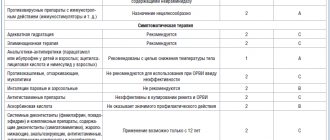In medieval medicine, viruses were all the most unpleasant and dangerous things, including poisons, spoiled foods and various impurities. In ancient stories about careless politicians, it was mentioned that they poured viruses - the poison of their bile - onto those around them. There are still politicians who are dissatisfied with their voters, but these days the term “virus” is still most often used in the literal rather than figurative sense.
In total, about six thousand viruses are known.i The discovery of new species is avalanche-like and continuously growing every year, including due to the fact that new diagnostic methods are being improved; humanity is becoming aware of what was inaccessible just a few years ago. Perhaps the hour is not far off when scientists will find effective methods of protection against all viruses that cause diseases. And our descendants will never face epidemics and pandemics. In the meantime, viral diseases occupy one of the first places among all human diseases. And you need to be able to fight them.
- Types of viral infections Respiratory viruses
- Gastrointestinal infections
- Infectious diseases of the skin and mucous membranes
- Infectious liver diseases
- Treatment of papillomavirus infection
Introduction
In Russia, the main burden in the treatment of acute respiratory viral infection (ARVI) (rhinitis, sinusitis, pharyngitis, etc.) falls on general practitioners - general practitioners, internists and pediatricians.
In adults, colds occur from 4 to 6 times a year, in children - from 6 to 8 times a year; Acute respiratory infection is the cause of 40% of cases of temporary disability, and in 30% of cases it is the cause of school absence. The common cold can be caused by more than 200 types of viruses, but the most common pathogens are rhinovirus, coronavirus, respiratory syncytial virus, or metapneumovirus. It is the virus, damaging the epithelial lining, that creates conditions for the activation of microbial flora (pneumococcus, Haemophilus influenzae, etc.), and viral-bacterial associations arise.
Transmission of infection occurs mainly by contact - through touching contaminated surfaces with subsequent entry into the respiratory tract, and not by airborne droplets, as was previously believed. Sometimes transmission of the infectious agent is possible through household items, toys, linen or dishes.
The incubation period for most viral infections is from 2 to 7 days. The release of viruses by patients is maximum on the 3rd day after infection, sharply decreasing by the 5th day; low-intensity virus shedding can persist for up to 2 weeks. Symptoms caused by colds usually last 1 to 2 weeks, and most patients feel better after 1 week. diseases. The vast majority of colds resolve spontaneously. Complications are extremely rare and usually occur in infants, the very elderly with weakened immune systems, and those with chronic illnesses.
Symptoms of ARVI are the result not so much of the damaging influence of the virus as of the reaction of the innate immune system. Affected epithelial cells secrete cytokines, including interleukins, the amount of which correlates both with the degree of attraction of phagocytes to the submucosal layer and epithelium, and with the severity of symptoms. An increase in nasal secretion is associated with an increase in vascular permeability; the number of leukocytes in the secretion can increase many times, changing its color from transparent to white-yellow or greenish, but this is not a sign of bacterial inflammation.
Viral infection: main symptoms of the disease
Symptoms of viral diseases vary depending on the specific type, the characteristics of the virus causing the infection, the area of the body affected, the age, medical history of the patient and other factors, the initial condition of the viral infection. Symptoms of viral diseases can affect almost any area of the body or body system. These may include:
- flu-like symptoms (fatigue, fever, sore throat, headache, cough, aches and pains);
- gastrointestinal disorders such as diarrhea, nausea and vomiting;
- irritability;
- malaise;
- rash;
- sneezing;
- nasal congestion, runny nose, or postnasal drip;
- swollen lymph nodes;
- inflammation, swelling of the tonsils;
- unexplained weight loss.
In infants, the pattern of viral infection may also include:
- protrusion of the fontanel on the top of the head;
- feeding difficulties;
- constant crying or restlessness;
- excessive sleepiness.
Principles of treatment of ARVI
The famous aphorism of the Canadian physician Sir William Osler: “The only cure for a cold is contempt” perfectly illustrates the existing possibilities for treating colds [1]. Despite numerous media claims, there is no significant evidence to date that any drug relieves symptoms or shortens the duration of the disease more than others. In today's saturated pharmaceutical market, the choice of optimal treatment tactics is especially difficult.
Treatment of acute respiratory infection depends on the stage of the disease and includes etiotropic therapy (fighting the virus), symptomatic therapy and measures aimed at preventing and treating bacterial complications (Table 1).
To prevent bacterial inflammation, local antibacterial agents are also used for administration into the nasal cavity in the form of ointments, drops, and sprays. These drugs must act on the main pathogens and be safe for the mucous membrane.
Serious signs that may indicate life-threatening complications
In some cases, it is necessary to strictly control how the infection manifests itself. Seek medical attention immediately if you experience any of the following symptoms:
- change in orientation in time, space or level of consciousness;
- chest pain;
- deep, wet chest cough producing yellow, green, or brownish sputum;
- high temperature (above 39 degrees);
- lethargy or lethargy;
- convulsions;
- shortness of breath, wheezing, or difficulty breathing;
- stiff neck muscles;
- yellowing of the skin and whites of the eyes (jaundice).
Features of etiotropic therapy for ARVI
Etiotropic therapy is recommended for influenza A (including H1N1) and B in the first 24–48 hours of illness [3]. Neuraminidase inhibitors are effective: oseltamivir (from the age of 1 year) 4 mg/kg/day, inhaled zanamivir (total 10 mg) 2 times/day, 5 days [3]. However, it should be remembered that in order to achieve an optimal effect, treatment should be started when the first symptoms of the disease appear; in addition, these drugs do not act on viruses that do not contain neuraminidase.
Antiviral drugs with immunotropic effects (immunostimulants, etc.) do not have a significant clinical effect, and their prescription is inappropriate [5, 6]. The reliability of the results of studies on the effectiveness of the use of immunomodulators for respiratory infections is low.
Contrary to popular belief, systemic antibiotic therapy in the case of an uncomplicated viral infection, prescribed for “prevention”, not only does not prevent bacterial superinfection, but also contributes to its development due to the suppression of the normal flora of the upper respiratory tract, which prevents the proliferation of pathogenic microorganisms.
Diagnostic methods
Most acute respiratory viral infections and influenza during the epidemic season are diagnosed clinically, taking into account the characteristics of the symptoms, the severity of the disease and the timing of the development of the disease (incubation period). Depending on how long the incubation period lasts - from the moment of contact with the patient to the first signs of the disease, the type of ARVI can be clarified.
In some cases, certain tests can help - blood tests, PCR tests, antibody studies. Viral infections have specific laboratory diagnostic features; they are characterized by changes in blood parameters. Additionally, the doctor can decide how to identify and distinguish specific types of viruses. For example, when infected with COVID-19, it is necessary to perform a rapid test for the presence of the virus, and during the recovery stage, it is necessary to determine the level of antibodies. Source: Improving the diagnosis of herpes viral infections. Vasiliev A.N., Fedorova N.E., Klimova R.R., Adieva A.A. Clinical laboratory diagnostics, 2012. p. 52-55.
Symptomatic treatment of ARVI
The leading role in the treatment of respiratory infections belongs to symptomatic therapy.
Adequate hydration helps to liquefy the secretions and facilitate their passage.
Elimination therapy is recommended because it is effective and safe. Injecting saline into the nose 2–3 times a day removes mucus and restores the functioning of the ciliated epithelium [2, 6]. It is recommended to prescribe vasoconstrictor nasal drops (decongestants) in a short course - no more than 5 days. These drugs do not shorten the duration of a runny nose, but can relieve symptoms of nasal congestion and also restore the function of the auditory tube.
In order to reduce body temperature in children, it is recommended to use paracetamol up to 60 mg/kg/day or ibuprofen up to 30 mg/kg/day [4, 7, 14]. In adults, acetylsalicylic acid and nimesulide can also be used.
Antitussives, expectorants, mucolytics, including numerous patented drugs with various herbal remedies, are not recommended for use in ARVI due to ineffectiveness [7, 8].
Steam and aerosol inhalations are not recommended for use, since they did not show any effect in randomized studies, and are also not recommended by the World Health Organization (WHO) for the treatment of ARVI [9, 10].
Antihistamines have not shown effectiveness in reducing the symptoms of rhinitis and ARVI [11].
Vitamin C does not have a significant preventive effect on the average population, but this effect is observed in people under stress, such as athletes [12].
Recently, systemic decongestants (phenylephrine, pseudoephedrine) and complex preparations containing decongestants (sympathomimetics), antipyretic, analgesic, antihistamine, antiseptic components and ascorbic acid in various combinations have become widespread. These drugs are easy to use and show comparable effectiveness to other drugs in their groups.
, however, their use is possible only from the age of 12 years (Table 2).
To eliminate dryness, rawness and soreness in the throat, treatment is mainly local and consists of eliminating irritating foods, prescribing rinses with warm alkaline and antibacterial solutions, and using other local symptomatic remedies. Of particular interest are combination drugs, for example 2,4-dichlorobenzyl alcohol and amylmetacresol in combination with various dietary supplements, to eliminate the clinical manifestations of the disease, capable of relieving discomfort in the throat, and having a pronounced antibacterial effect. With severe pain in the pharynx, systemic analgesics are often ineffective and are used only as antipyretics. In these cases, combination drugs containing local anesthetics are also used. They are mainly presented in the form of aerosols and lozenges.
The composition of aerosols usually includes antibacterial (chlorobutanol hydrate, furacillin, sulfanilamide, sulfathiazole, chlorhexidine) components, menthol, camphor, eucalyptus, vaseline, camphor, castor, olive, peppermint, and anise oils. They have local anesthetic, antiseptic, and anti-inflammatory effects. Lollipops have a similar composition (antibacterial component, menthol, oils), reduce pain in the throat and have a deodorizing effect.
Prevention of bacterial complications
Drugs for the prevention of bacterial inflammation in acute respiratory viral infections are prescribed mainly locally; it is advisable to start using them at the final stage (5–7th day) of the disease. For these purposes, rinsing with antiseptic solutions is used (Table 3).
To prevent bacterial inflammation in the nasal cavity, it is advisable to use local antibacterial agents, such as antibacterial ointments containing mupirocin; it is possible to use drops and sprays with antibiotics.
Standing apart among drugs for the prevention of bacterial inflammation in the nasal cavity and pharynx is a drug containing colloidal silver - silver proteinate (Sialor®). This drug has an astringent, antiseptic and anti-inflammatory effect. In Russia, a 1–2% solution of silver proteinate has traditionally been used for local treatment of bacterial infections of the upper respiratory tract, eyes, and genitourinary system; in the Soviet Union, silver proteinate has been produced since 1964 in the form of a 2% solution.
Silver proteinate dissociates to form silver ions, which prevent the proliferation of bacteria by binding to their DNA, thus, Sialor® has a bactericidal and bacteriostatic effect on most gram-positive and gram-negative bacteria, such as Streptococcus pneumoniae, Staphylococcus aureus, Moraxella catarrhalis
, fungal flora, etc.
The anti-inflammatory mechanism of action of a colloidal silver solution on a damaged mucous membrane is based on the ability to form a protective albuminate film, which occurs due to the deposition of proteins. This film reduces the permeability of the mucous membrane to bacteria and ensures the normal functional state of cells, promoting the rapid restoration of the mucous membrane. All this is especially important for the prevention of secondary bacterial infection during ARVI.
Due to its wide antibacterial spectrum of action and the unique ability to form a protective film on the surface of the mucous membrane, Sialor® has an extremely wide range of indications for use. This drug is actively used in everyday practice not only for treatment, but also for the prevention of infections of the nasal cavity and nasopharynx in the autumn-winter period. Therapy with the drug also gives good results for non-infectious inflammatory diseases such as allergic and vasomotor rhinitis.
The solution is prepared immediately before use (200 mg of the drug is dissolved in 10 ml of water for injection), stored at room temperature, and can be used within 30 days after preparation. Inject 1-2 drops 3 times a day into the cleaned nasal passages for children 3-6 years old, 2-3 drops (1-2 irrigations for release forms with a spray nozzle) 3 times a day for children over 6 years old and adults each nasal passage. The duration of treatment is 5–7 days [15].
What is a bacterium: composition, nutrition, reproduction
Most often, bacteria are single-celled. Their cell contains RNA or DNA floating in water, which fills the internal space by 70-80%. This content is usually held in place by a membrane called the cell wall. “Loners” are able to gather in groups, sometimes quite numerous, sticking to each other’s walls.
There are three ways bacteria feed. So they are called saprotrophs, parasites or symbionts. Saprotrophs are scavengers that live off dead organic matter. Parasites feed on their living host, but symbionts coexist with it.
The standard method of reproduction is the so-called division, a method that does not require sexual differentiation. Under favorable conditions it occurs very rapidly.







